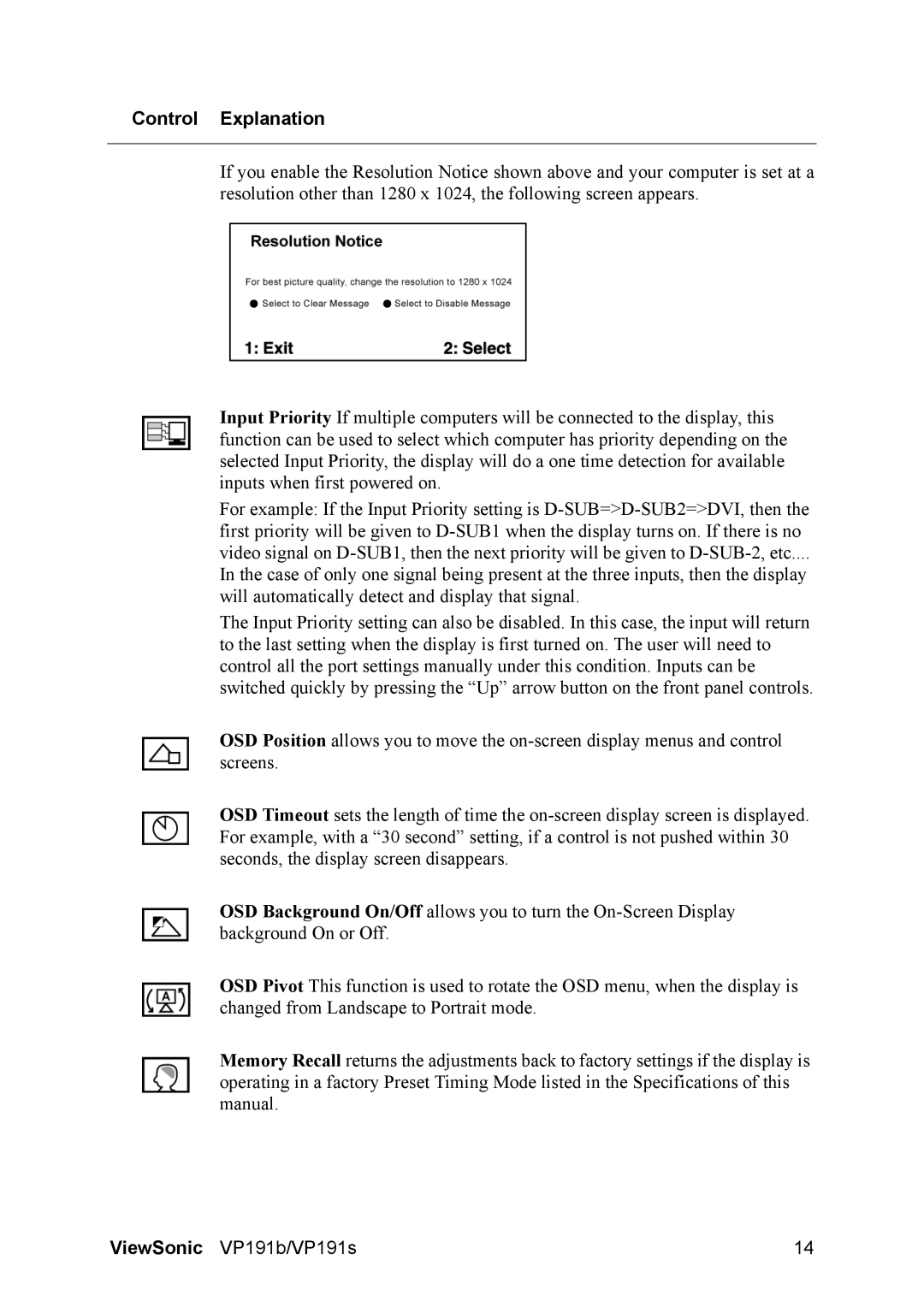
Control Explanation
If you enable the Resolution Notice shown above and your computer is set at a resolution other than 1280 x 1024, the following screen appears.
Input Priority If multiple computers will be connected to the display, this function can be used to select which computer has priority depending on the selected Input Priority, the display will do a one time detection for available inputs when first powered on.
For example: If the Input Priority setting is
In the case of only one signal being present at the three inputs, then the display will automatically detect and display that signal.
The Input Priority setting can also be disabled. In this case, the input will return to the last setting when the display is first turned on. The user will need to control all the port settings manually under this condition. Inputs can be switched quickly by pressing the “Up” arrow button on the front panel controls.
OSD Position allows you to move the
OSD Timeout sets the length of time the
OSD Background On/Off allows you to turn the
OSD Pivot This function is used to rotate the OSD menu, when the display is changed from Landscape to Portrait mode.
Memory Recall returns the adjustments back to factory settings if the display is operating in a factory Preset Timing Mode listed in the Specifications of this manual.
ViewSonic VP191b/VP191s | 14 |
